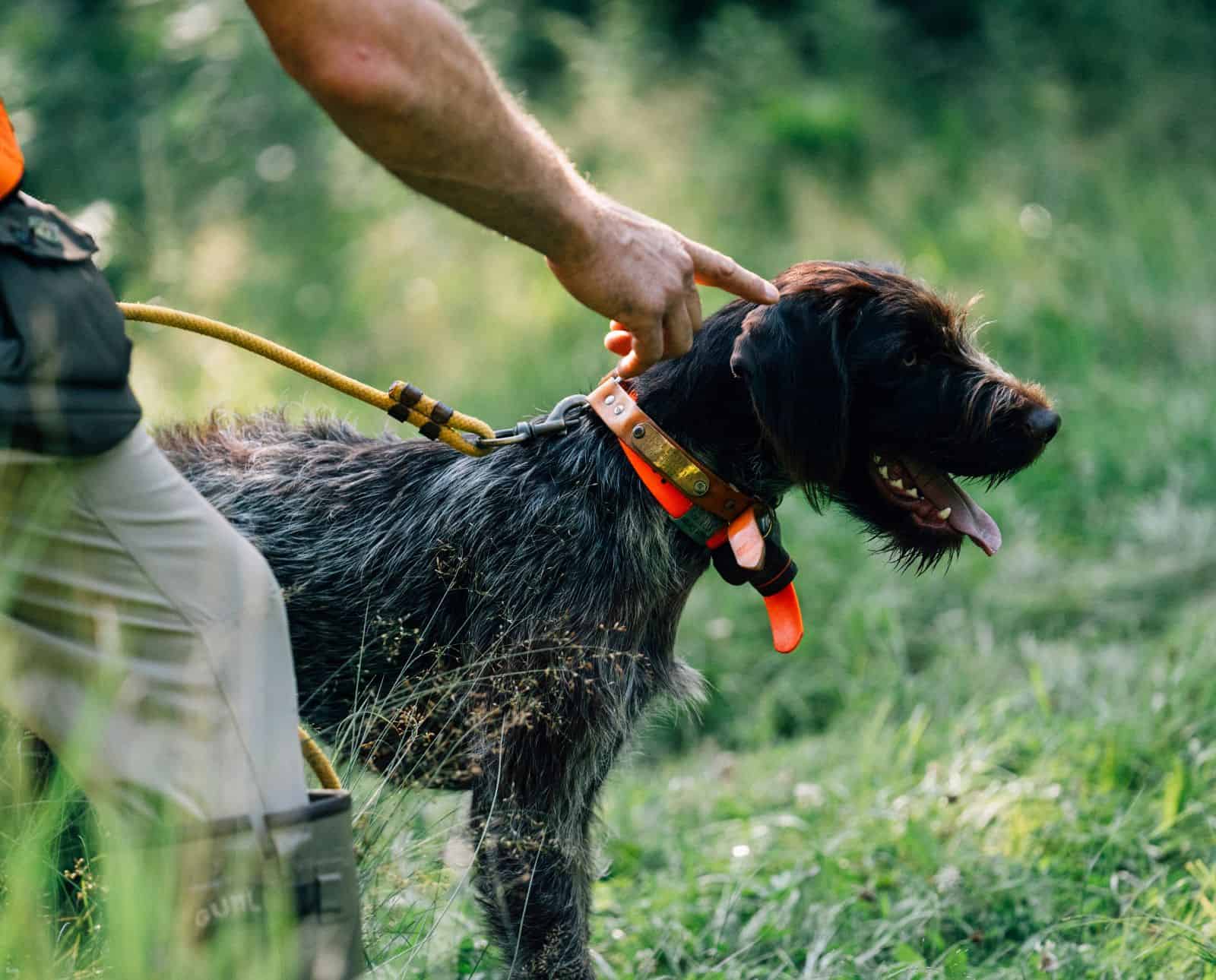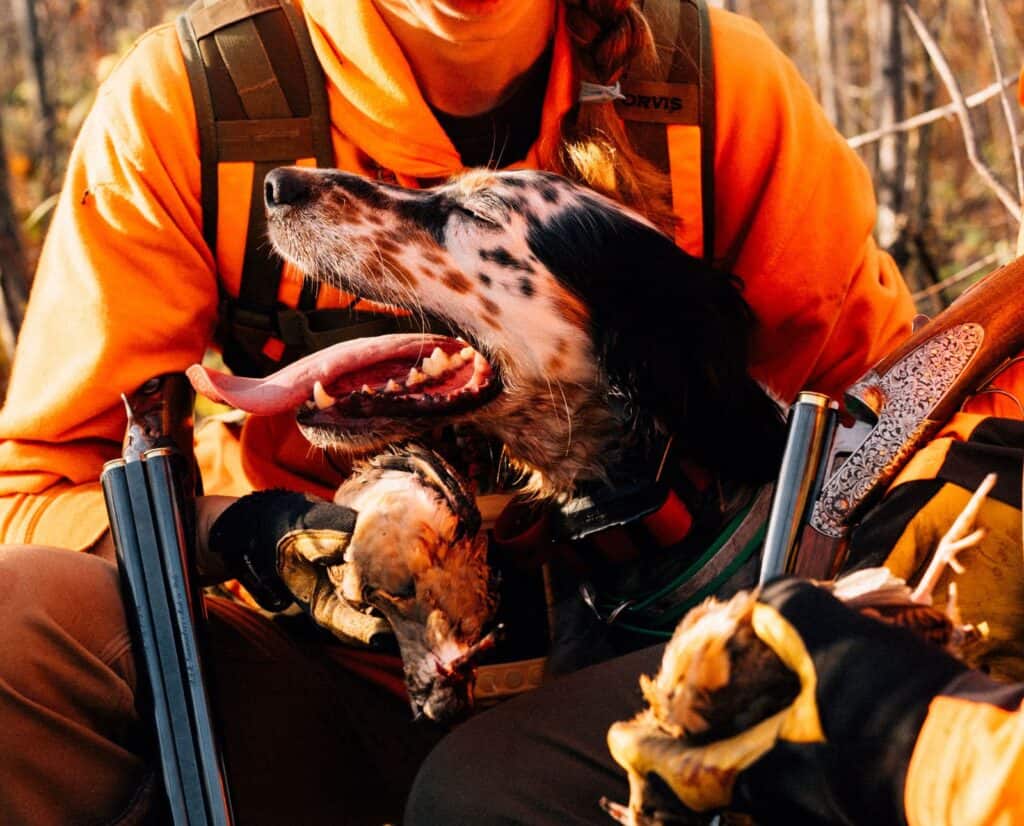Home » Hunting Dogs » Why Strong Leadership Is the Secret to Successful Dog Training
Why Strong Leadership Is the Secret to Successful Dog Training

Jason Carter is a NAVHDA judge, NADKC member, director of…
Confident, consistent leadership improves obedience and builds a stronger bond with your dog.
Have you ever noticed the effect strong leadership has on you? A leader can command a space by simply walking into the room. Effective leaders are calm yet assertive, and create a sense of cohesiveness within the team. The confident energy they exude is similar to that of influential dog trainers. It’s important we exhibit leadership while training our dogs.
Being educated, having a plan, and presenting information clearly and confidently are pillars of being an effective dog trainer. When working with dogs, good leaders only command when they have something to say. They know where they are going and how to get there. Disobedience is dealt with promptly at a level that connects with the dog’s character at that moment. Trainers who are able to lead become everything a dog wants and needs.
Becoming A Great Dog Trainer Starts With Leadership
Dog handlers who exhibit confidence follow through with commands consistently and insistently. Additionally, a good leader presents strength both visually and verbally. Dog trainers who lack confidence and follow-through often experience difficulties when handling their dogs.
Dogs that struggle with leadership are often handled by mousy or meek handlers who are afraid to correctly use commands. The handler questions their capabilities due to insecurities. This often stems from an inconsistent training regiment, a lack of experience, or a lack of understanding in their training process. This sends the message to the dog that their handler is not in charge. To these dogs, commands are suggestions, not orders. In these instances, the dog will either ignore its handler or become fearful and confused.

Tone and Energy Matter When Communicating With Dogs
At a NAVHDA training clinic several years ago, a handler struggled to gain compliance from her dog once it knew there were birds in the field. I saw her frustration building. She turned to me and asked what she should do.
Her commands were soft and meek, uncharacteristic of how she presented earlier in the day. I knew she was a very outspoken, capable, and well-respected leader. Outside of this uncharacteristic soft commanding, she was a hard-nosed, take-no-prisoner type.
I asked her to whoa her dog. Again, she delivered a soft whoa which the dog shrugged off without a glance.
“Why is your dog ignoring you?” I asked.
“He can’t hear me,” she said.
“Oh, he can hear you,” I replied. “It’s how you are commanding. Think about how you delivered your whoa and change the tone so it means something to the dog. How about you use the tone you would use on your husband.” Well, let me tell you, the tone that came from that woman’s voice would send the devil scurrying. That dog couldn’t lock up the brakes fast enough. For the rest of the clinic, the dog remained connected and obedient.
The Difference Between Leadership and Dominance in Dog Training
In dog training, the word “leadership” is often thought to be synonymous with dominance. Though dominance is certainly an important aspect of dog training, a dog identifies its leader based on qualities that support its safety, trust, and mental and physical well-being.
The moment a pup enters your home, it’s looking to replace the mother it lost. The pup is eager to be led towards satisfying its needs. Leadership doesn’t require us to diminish a pup. It is a presence that leads the dog away from problems and towards pleasure. As I like to say, dogs that want to work act differently than dogs that have to work. Good trainers can fix problems, but great trainers avoid them altogether through incentive-based leadership.

Strong Leadership Builds Calm, Focused, and Eager-to-Please Dogs
With a well-led dog, learning happens so fast, the dog appears to train itself. This is because leaders don’t send confusing mixed messages down the lead. Commands are delivered clearly, which allows the dog to relax because it understands exactly what you expect. The mind of a calm dog allows it to instantly learn things others find difficult to teach.
Similarly, your dog’s body language will change when it’s being led by a strong handler. Instead of causing the dog to shrink up, the handler’s presence emboldens it. The dog is excited by training and wants to please out of respect and admiration—not fear. The trainer shows the dog they are in control of the environment, relinquishing the dog from any responsibilities.
When a trainer adopts the role of alpha, it reduces the pup’s responsibilities and frees it from the burdens of leadership. The trainer makes hard decisions for their pup; assigning this task to a developing pup’s brain is unhealthy. That said, Mother Nature won’t allow for an alpha void to go unfilled. If you’re not in charge, the pup is forced to assume the responsibility.
Weak Leadership Leads to Anxiety, Disobedience, and Stress in Dogs
If it assumes the role of leader, your dog will be inclined to protect you. This sets the stage for resource guarding, or protecting you as its resource. Resource guarding creates anxiety and forces the dog to focus on things other than your training session. The pup will do its best to learn, though its priority will be watching for any signs of trouble.
Weak leadership is one of the main reasons dogs exhibit anxious behaviors, including behaviors that could be described as manic or neurotic. Examples include pups that can’t settle down, or ones that jump and nip at their handler. They are distracted and express incessant vocalizations.
Handlers often respond to these behaviors by adding more pressure, causing increased stress and anxiety. At some point, the handler will become frustrated and upset. They will blame the breeder or a training regimen. The pup feels its handler’s frustration, causing it toxic stress and triggering more anxiety in training environments.
This downward spiral makes training unenjoyable for all. However, with proper leadership, all this anxiety and stress could have been avoided.
Leaders who take the role of being their pup’s protector and provider create happier dogs. Dogs in the hands of leaders are calmer because they know their master will handle any problems. Some describe it as early maturity, but the reality is that the pup knows its place and is happy to fill its role as a follower. Well-led dogs tend to get along with other dogs and are more inclined to play because they have no other responsibilities. Learning happens easily as the pup can be mentally present, which reduces distractibility while rewards and pleasure increase. These pups develop tighter bonds with their leaders.

Leadership Is the Foundation of Every Great Bird Dog
The foundation of any great hunting dog includes good hunting attributes backed by proper training. However, it’s your leadership that makes it all possible. A genetically mediocre dog can still be a good bird dog with the right leader and experience. However, for us to tap into a dog’s genetics, the dog must first want to be led.
If bird dog owners spent more energy looking inward and refining their leadership capabilities rather than searching for alternate training approaches, they’d find more success. Understanding what dogs are looking for in a leader allows us to adjust our training approaches.
As you grow as a leader, everything about you will communicate that you know what you are doing to your dog. The tone of your commands will change. The once-meek notes in your voice will be replaced by confident tones that demand respect. Your dog will realize that you are the leader it wants.
From your voice, body position, and facial expressions, the dog will realize it should follow you. As it does so, your dog will relinquish its control and happily accept that its day starts and ends with you.
Jason Carter is a NAVHDA judge, NADKC member, director of youth development, secretary of NAVHDA’s youth committee, clinic leader and trainer at Merrymeeting Kennels. He has been around versatile hunting dogs his entire life, literally! Born into the Carter family and Merrymeeting Kennels, he attended his first NAVHDA test in Bowdoinham, Maine, when he was just a year of age. Jason successfully trains, tests and breeds Deutsch Kurzhaars in both the NAVHDA and NADKC testing systems. Through his work at the kennel, Jason has had the opportunity to develop pointers, flushers and retrievers over the years. When October arrives he can be found with family and friends hunting throughout New England.



